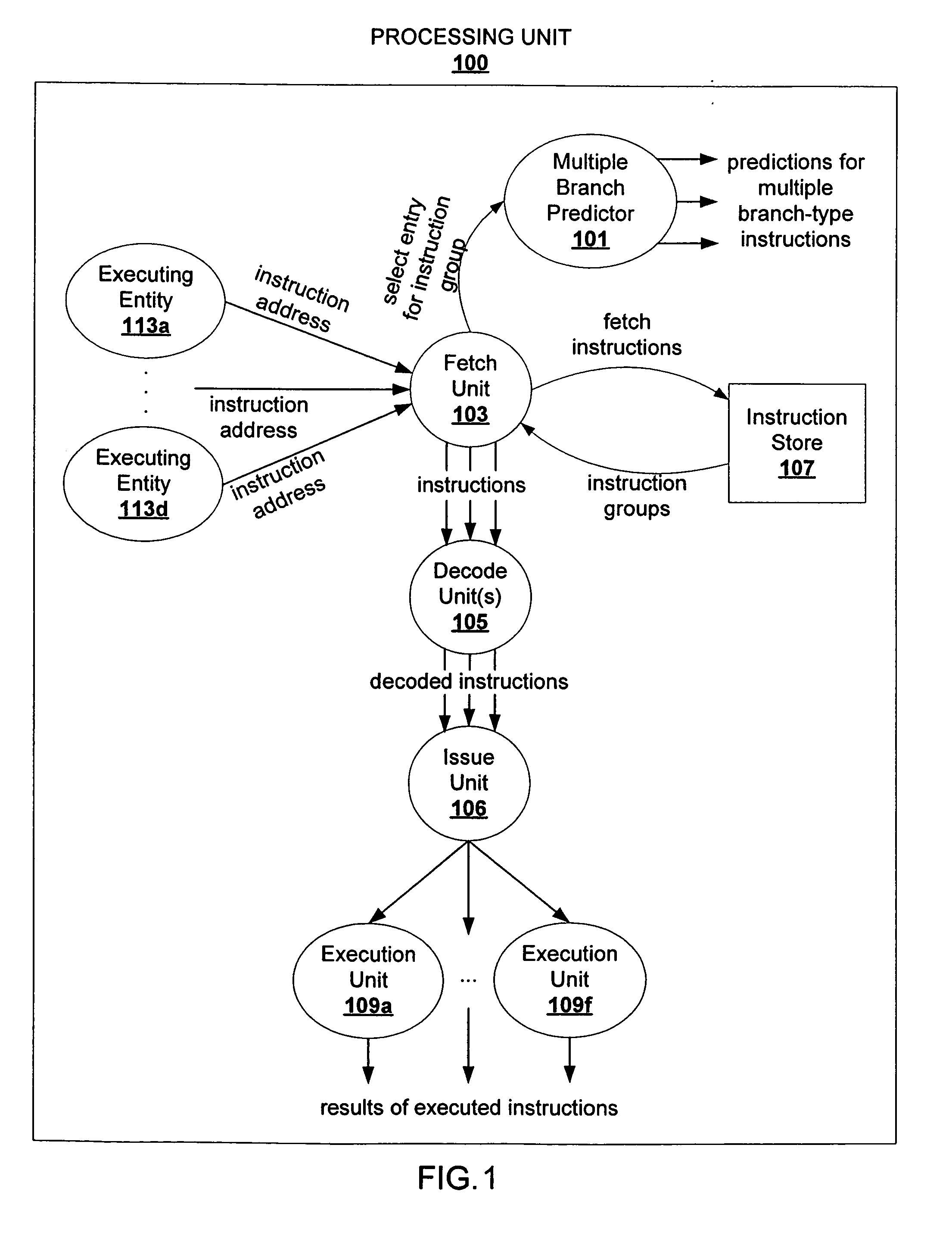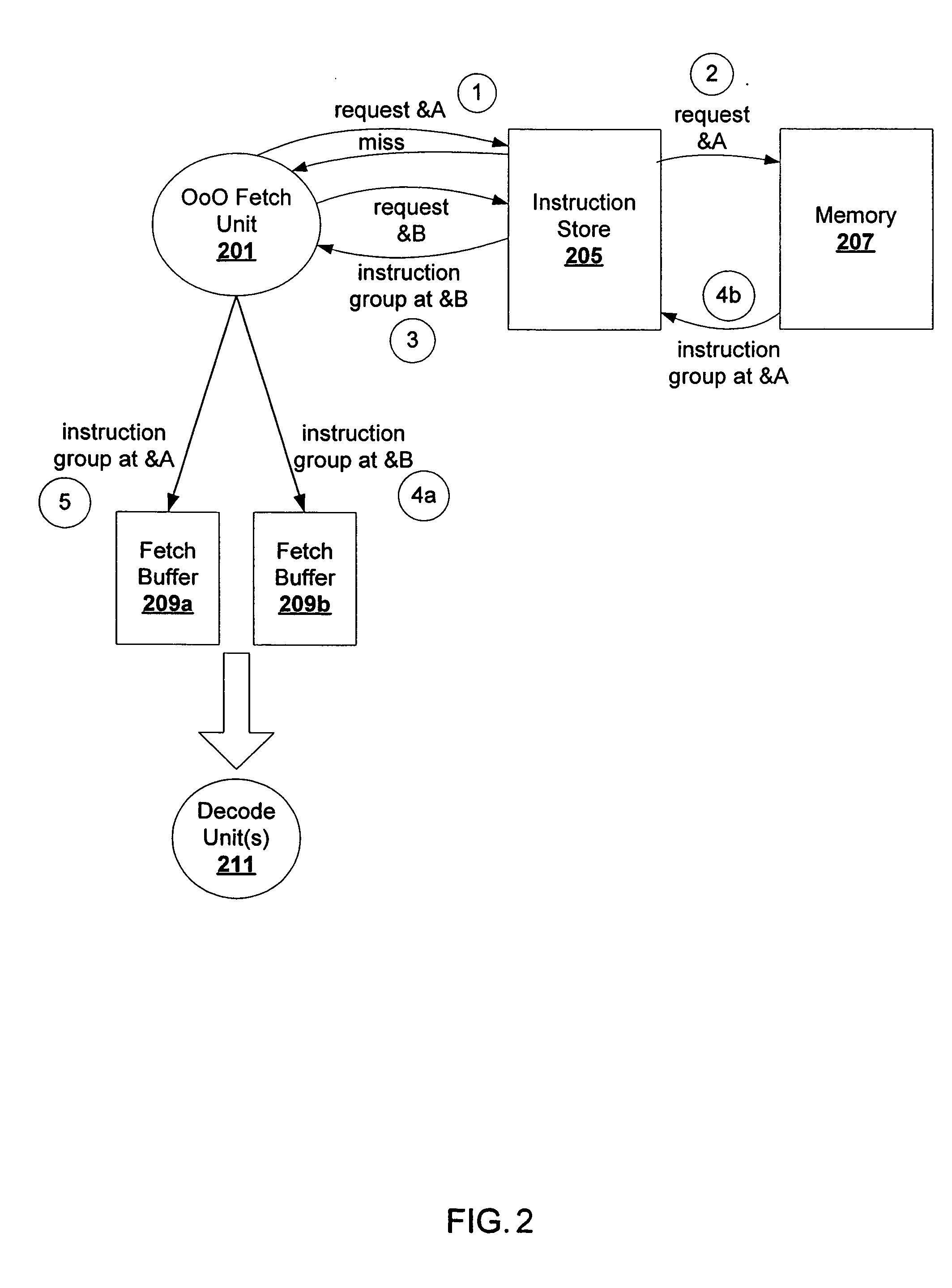Multiple branch predictions
- Summary
- Abstract
- Description
- Claims
- Application Information
AI Technical Summary
Benefits of technology
Problems solved by technology
Method used
Image
Examples
Embodiment Construction
)
[0019] The description that follows includes exemplary systems, methods, techniques, instruction sequences and computer program products that embody techniques of the present invention. However, it is understood that the described invention may be practiced without these specific details. For instance, storing branch predictions for groups of instructions can be implemented with various data structures (e.g., hash tables, binary search trees, etc.) and / or with hardware mechanisms (e.g., hardware tables, content addressable memory, etc.). In other instances, well-known protocols, structures and techniques have not been shown in detail in order not to obscure the invention.
[0020] In particular, architecting a high performance processing environment that reconciles high frequency operation, pipeline processing environments with multiple threads, multiple cores, and / or multiple processors process instructions at a high rate. A high bandwidth pipeline for such processing environments i...
PUM
 Login to View More
Login to View More Abstract
Description
Claims
Application Information
 Login to View More
Login to View More - R&D
- Intellectual Property
- Life Sciences
- Materials
- Tech Scout
- Unparalleled Data Quality
- Higher Quality Content
- 60% Fewer Hallucinations
Browse by: Latest US Patents, China's latest patents, Technical Efficacy Thesaurus, Application Domain, Technology Topic, Popular Technical Reports.
© 2025 PatSnap. All rights reserved.Legal|Privacy policy|Modern Slavery Act Transparency Statement|Sitemap|About US| Contact US: help@patsnap.com



